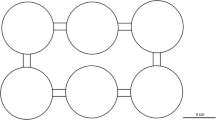Abstract
Social parasitism is a common phenomenon amongst ants that occurs in manifold variations with differing levels of parasite–host integration. Particularly, high levels of social integration occur amongst closely related species (Emery’s rule), which form mixed colonies with their hosts and comprise the vast majority of social parasites. Considerable lower levels of integration are typically found amongst unrelated species that live in clearly separated colonies. The formicine ant Polyrhachis lama, however, parasitises a phylogenetically distant host species, Diacamma sp. of the subfamily Ponerinae, but lives spatially mixed with the host colonies. Studies on integration and communication have indicated that P. lama shows a high degree of host integration. However, the allocation of brood care behaviour, a central aspect of parasite integration, has not been studied. Because all known ant social parasites that are fully mixed with their host colonies are also true brood parasites, we investigated the integration of P. lama brood. Our results demonstrate that the parasite brood has a high degree of spatial integration, although it remains functionally separated regarding nutritive brood care. This can be attributed to behavioural and morphological differences between the phylogenetically distant species. The observed spatial confinement of parasite brood, however, is most likely due to an unusual method of chemical host integration. The parasite brood remains accepted in the Diacamma colonies only under the presence of adult parasites. Altogether, this suggests an active mechanism of chemical integration based on the acceptance allomones originating from P. lama workers.


Similar content being viewed by others
References
Allies A.B., Bourke A.F.G. and Franks N.R. 1986. Propaganda substances in the cuckoo ant Leptothorax kutteri and the slave-maker Harpagoxenus sublaevis. J. Chem. Ecol. 12: 1285–1293
Buschinger A. and Francoeur A. 1983. The guest ant, Symmyrmica chamberlini, rediscovered near Salt Lake City, Utah (Hymenoptera, Formicidae). Psyche 90: 297–305
Corbara B. and Errard C. 1991. The organization of artificial heterospecific ant colonies. The case of the Manica rubida, Formica selysi association. Mixed colony or parallel colonies. Behav. Process. 23: 75–87
Emery C. 1909. Über den Ursprung der dulotischen, parasitischen und myrmekophilen Ameisen. Biol. Centralbl. 29: 352–362
Foitzik S., DeHeer C.J., Hunjan D.N. and Herbers J.M. 2001. Coevolution in host-parasite systems: behavioral strategies of slave-making ants and their hosts. Proc. R. Soc. Lond. B. Biol. Sci. 268: 1139–1146
Foitzik S., Fischer B. and Heinze J. 2003. Arms-races between social parasites and their hosts: Geographic patterns of manipulation and resistance. Behav. Ecol. 14: 80–88
Forel A. 1898. La parabiose chez les fourmis. Bull. Soc. Vaud. Sci. Nat. 34: 380–384
Hölldobler B. and Wilson E.O. 1990. The Ants. The Belknap Press of Harvard University Press, Cambridge, MA. 732 pp
Huang M.H. and Dornhaus A. 2008. A meta-analysis of ant social parasitism: host characteristics of different parasitism types and a test of Emery’s rule. Ecol. Entomol. 33: 589–596
Kaufmann E., Malsch A.K.F., Erle M. and Maschwitz U. 2003. Compound nesting of Strumigenys sp. (Myrmicinae) and Diacamma sp. (Ponerinae), and other nesting symbioses of myrmicine and ponerine ants in Southeast Asia. Insect. Soc. 50: 88–97
Kistner, D.H. 1982. The social insects’ bestiary. In: Social insects (H.R. Hermann, Ed.), Academic Press, New York. pp. 1–244.
Le Masne G. 1970. Observations sur les relations entre individus dans les sociétés de fourmis. Thèse faculté des Sciences de Paris, n° CNRS AO.5005
Lenoir A., Malosse C. and Yamaoka R. 1997. Chemical mimicry between parasitic ants of the genus Formicoxenus and their host Myrmica (Hymenoptera, Formicidae). Biochem. Syst. Ecol. 25: 379–389
Maschwitz U., Dorow W.H.O., Buschinger A. and Kalytta G. 2000. Social parasitism involving ants of different subfamilies: Polyrhachis lama (Formicinae) an obligatory inquiline of Diacamma sp. (Ponerinae) in Java. Insect. Soc. 47: 27–35
Maschwitz U., Go C., Kaufmann E. and Buschinger A. 2004. A unique strategy of host colony exploitation in a parasitic ant: workers of Polyrhachis lama rear their brood in neighbouring host nests. Naturwissenschaften 91: 40–43
Maschwitz U., Liefke C. and Buschinger A. 2001. How host and parasite communicate: signal analysis of tandem recruitment between ants of two subfamilies, Diacamma sp. (Ponerinae) and its inquiline Polyrhachis lama (Formicinae). Sociobiology 37: 65–77
Petralia R.S. and Vinson S.B. 1979. Comparative anatomy of the ventral region of ant larvae, and its relation to feeding behavior. Psyche 86: 375–394
Vantaux A., Dejean A., Dor A. and Orivel J. 2007. Parasitism versus mutualism in the ant-garden parabiosis between Camponotus femoratus and Crematogaster levior. Insect. Soc. 54: 95–99
Wheeler W.M. 1901. The compound and mixed nests of American ants. Part II. The known cases of social symbiosis among American ants. Am. Nat. 35: 513–539
Wheeler W.M. 1918. A study of some ant larvae, with a consideration of the origin and meaning of the social habit among insects. Proc. Am. Philos. Soc. 57: 293–343
Wilson E.O. 1971. The Insect Societies. Harvard University Press, Cambridge, Massachusetts. 548 pp
Yéo K., Molet M. and Peeters C. 2006. When David and Goliath share a home: Compound nesting of Pyramica and Platythyrea ants. Insect. Soc. 53: 435–438
Acknowledgments
The experiments reported in this study complied with German laws. We would like to thank Alfred Buschinger for critical comments that improved this paper.
Author information
Authors and Affiliations
Corresponding author
Electronic supplementary material
Below is the link to the electronic supplementary material.
Supplementary video (MPG 4824 kb)
Rights and permissions
About this article
Cite this article
Witte, V., Lehmann, L., Lustig, A. et al. Polyrhachis lama, a parasitic ant with an exceptional mode of social integration. Insect. Soc. 56, 301–307 (2009). https://doi.org/10.1007/s00040-009-0024-2
Received:
Revised:
Accepted:
Published:
Issue Date:
DOI: https://doi.org/10.1007/s00040-009-0024-2




